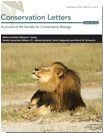Effective wildlife trusteeship requires trust administrators to be sensitive to the condition of the trust resource and beneficiaries’ desires for allocation of benefits. Trust administrators need adequate ecological and social information to understand and monitor these two considerations. Social information helps trust administrators treat all citizens as trust beneficiaries by developing policies, processes, and programs that fairly and comprehensively consider beneficiaries’ needs, interests, and concerns with respect to wildlife.
This approach sets a high bar for trust administration, and in the extreme may be somewhat aspirational. Current cultures and practices of public wildlife agencies vary in the extent to which they align with public trust thinking and good governance. 1 This variation reflects differences in how wildlife conservation and management responsibilities were originally incorporated into their legal mandates, and how they subsequently attempted to adapt to changing citizen needs, interests, concerns, and expectations. Nevertheless, trust administrators could attain more effective wildlife trusteeship by integrating public trust thinking and good governance consistently in their work. A set of ten Wildlife Governance Principles has been offered up as guidance for this purpose: 2
- Wildlife governance will be adaptable and responsive to citizens’ current needs and interests, while also being forward-looking to conserve options of future generations.
- Wildlife governance will seek and incorporate multiple and diverse perspectives.
- Wildlife governance will apply social and ecological science, citizens’ knowledge, and trust administrators’ judgment.
- Wildlife governance will produce multiple, sustainable benefits for all beneficiaries.
- Wildlife governance will ensure that trust administrators are responsible for maintaining trust resources and allocating benefits from the trust.
- Wildlife governance will be publicly accessible and transparent.
- Wildlife governance will ensure that trust administrators are publicly accountable.
- Wildlife governance will include means for citizens to become informed and engaged in decision making.
- Wildlife governance will include opportunities for trust administrators to meet their obligations in partnerships with non-governmental entities.
- Wildlife governance will facilitate collaboration and coordination across ecological, jurisdictional and ownership boundaries.
As a result of the differences in agency culture, policy and practice mentioned earlier, each public agency will have to focus on particular elements of their organizational culture and decision-making practices to improve application of a public trust approach. 3 4
Back to the Public Trust Anthology main page
Featured Publications
Click on the image to be directed to the article website. Placing your cursor on the text will automatically stop the movement.
- Applying Public Trust Thinking to Wildlife Governance in the United States: Challenges and Solutions ↩
- Governance Principles for Wildlife Conservation in the 21st Century ↩
- Applying Public Trust Thinking to Wildlife Governance in the United States: Challenges and Solutions ↩
- Governance Principles for Wildlife Conservation in the 21st Century ↩


